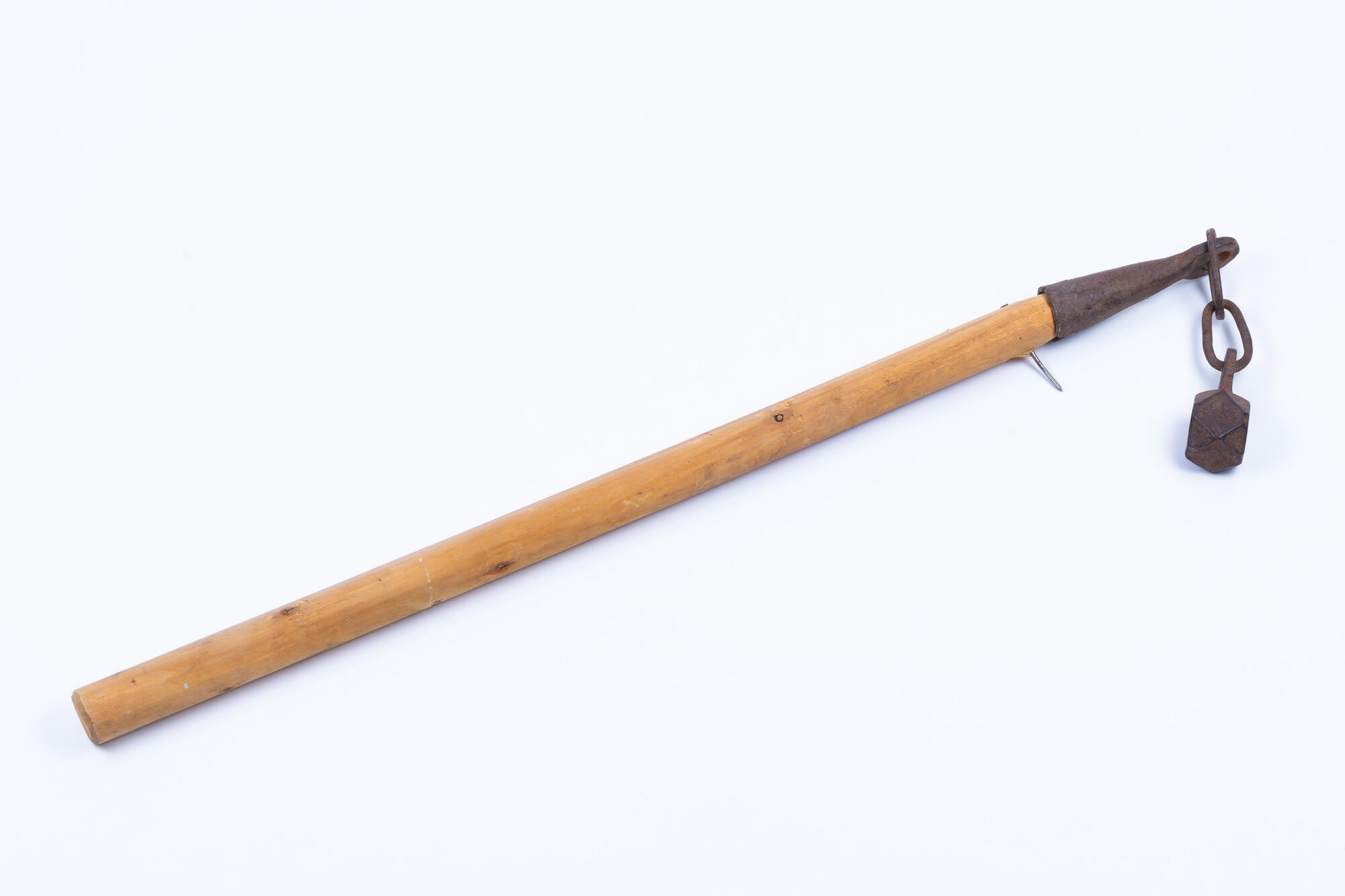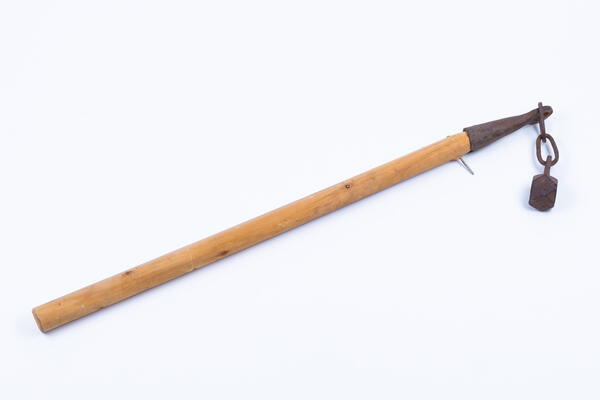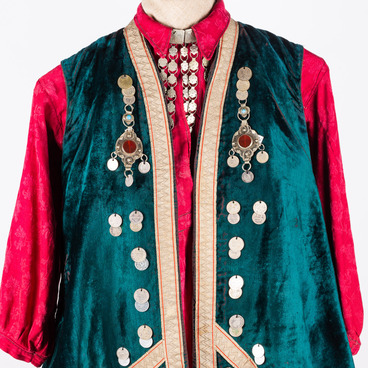A kisten' is a type of antique weapon, reminiscent of a morning star. It was essentially a metal ball on a chain, attached to a short handle. The handle’s opposite end had a rope loop that was secured around the wielder’s wrist. It was common practice to tuck this weapon under the belt, so it could easily be whipped out and put to use.
The bludgeoning weight, which was the most important element of a kisten', was known as bilo, literally ‘hitter.’ It was usually made from stone, bone, or metal. The bilo was attached to a wooden handle, or kistenische, and suspended on a strip of flexible material: sturdy rope, leather, or chain.
Being both affordable and resilient, this weapon became fairly common during the 10th and 17th centuries throughout Asia and Europe. The materials required for making the handles, bilos, and suspensions were simple and could be found in abundance, making the weapon very cheap and easy to make. In order to assemble a fully functional kisten', a person simply needed to find a stone of the right size, make a hole in it, and attach it to a handle. That said, metal bilos were used far more often, as bone and stone bilos were too fragile and inefficient by comparison.
Either way, it was nearly impossible to seriously injure someone by hitting them a kisten' if that person was wearing good armour. More than that, this type of weapon was not very useful for parrying or self-defense. Therefore, warriors usually carried a kisten' as a last resort.
Skilled warriors did not consider it particularly damaging and relied on it very rarely. It was more of a traveller’s weapon. A kisten' was a common companion for Bashkirs, who used such weapons if they had to go somewhere at night or to defend their home.
Sometimes, the word kisten' is also used for another weapon type: a bludgeoning weight suspended on flexible material without a handle. But many literary sources that contain in-depth descriptions of this weapon’s features classify this version as a slungshot, or gasilo. There are notable differences between a gasilo and a classical kisten', in terms of both structure and fighting technique.
In many cases, the term kisten' is applied more broadly to all bludgeoning weapons that consist a heavy weight attached to a chain, such as flails. A flail and a kisten' do rely on a similar battle technique. However, a flail has a longer handle and a much shorter suspension.
The bludgeoning weight, which was the most important element of a kisten', was known as bilo, literally ‘hitter.’ It was usually made from stone, bone, or metal. The bilo was attached to a wooden handle, or kistenische, and suspended on a strip of flexible material: sturdy rope, leather, or chain.
Being both affordable and resilient, this weapon became fairly common during the 10th and 17th centuries throughout Asia and Europe. The materials required for making the handles, bilos, and suspensions were simple and could be found in abundance, making the weapon very cheap and easy to make. In order to assemble a fully functional kisten', a person simply needed to find a stone of the right size, make a hole in it, and attach it to a handle. That said, metal bilos were used far more often, as bone and stone bilos were too fragile and inefficient by comparison.
Either way, it was nearly impossible to seriously injure someone by hitting them a kisten' if that person was wearing good armour. More than that, this type of weapon was not very useful for parrying or self-defense. Therefore, warriors usually carried a kisten' as a last resort.
Skilled warriors did not consider it particularly damaging and relied on it very rarely. It was more of a traveller’s weapon. A kisten' was a common companion for Bashkirs, who used such weapons if they had to go somewhere at night or to defend their home.
Sometimes, the word kisten' is also used for another weapon type: a bludgeoning weight suspended on flexible material without a handle. But many literary sources that contain in-depth descriptions of this weapon’s features classify this version as a slungshot, or gasilo. There are notable differences between a gasilo and a classical kisten', in terms of both structure and fighting technique.
In many cases, the term kisten' is applied more broadly to all bludgeoning weapons that consist a heavy weight attached to a chain, such as flails. A flail and a kisten' do rely on a similar battle technique. However, a flail has a longer handle and a much shorter suspension.



